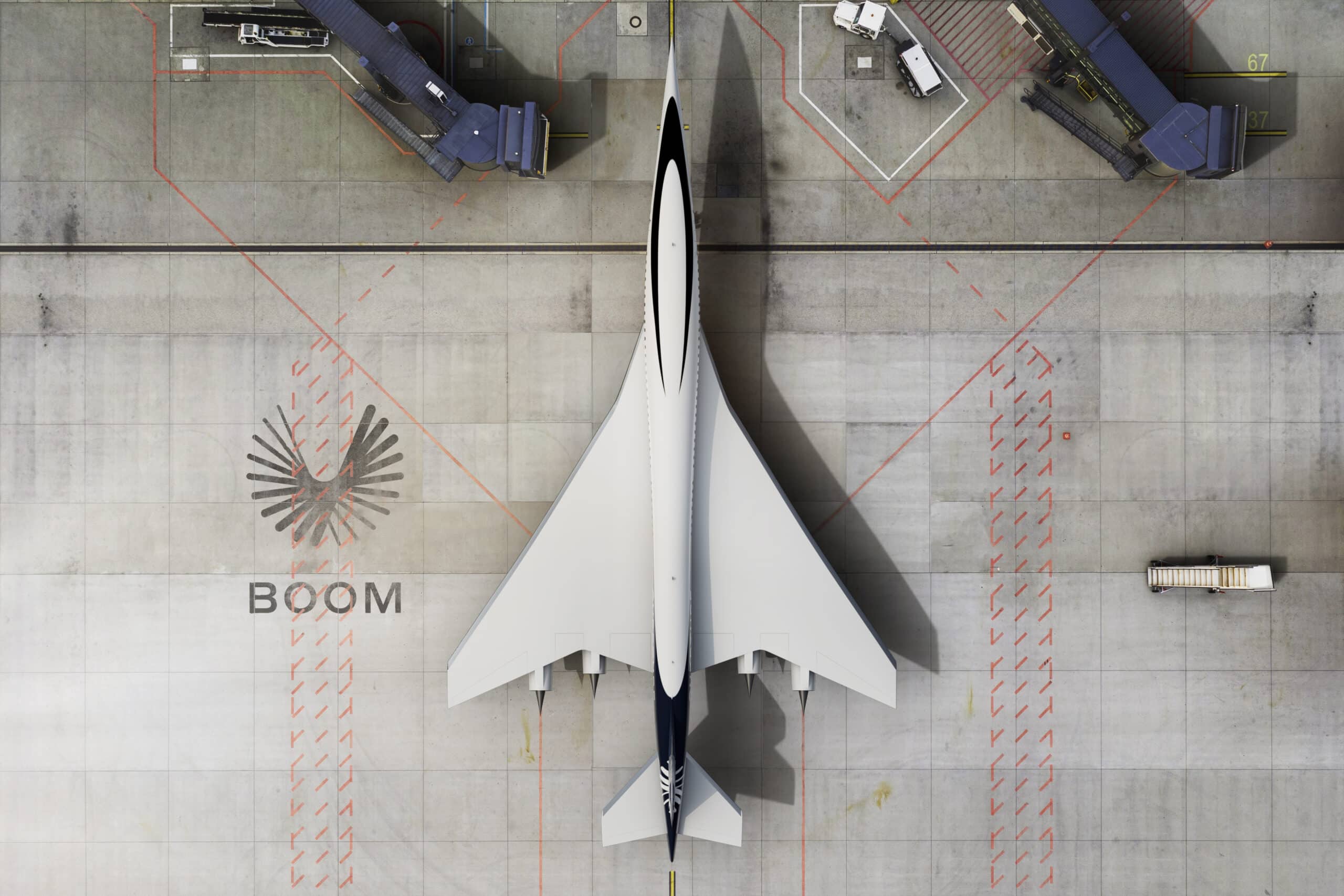Boom Supersonic has redesigned its proposed Mach 1.7 airliner, adding a medium-bypass engine and shrinking its maximum passenger load 9 percent, the company said at the Farnborough Air Show. The company also is widening the wingspan and shortening the fuselage.
Boom also said it had added Collins Aerospace, Eaton, Northrop Grumman, and Safran Landing Systems to the Overture supersonic transport’s development team, The Centennial, Colorado-based company is still on track for first flight in 2026 and entry to commercial service in 2029, founder and CEO Blake Scholl told CNBC at the show southwest of London.
“We’ve been making great progress,” Scholl said. “Really proud of what we’ve done in the last 12 months.”
The company said the redesign followed “26 million core-hours of simulated software designs, five wind tunnel tests, and the careful evaluation of 51 full design iterations” and would make the Overture more “economically and environmentally sustainable.” The redesigned, composite SST will carry 65 to 80 passengers. As recently as January, the company said the Overture would be able to carry 88 passengers.
Boom is not holding off on the Overture program to incorporate supersonic-signature reductions being developing by NASA. Those boom-dampening efforts are aimed persuading regulators to ease their ban on supersonic flight over land. Boom said the 201-foot-long, 36-foot-high (61.3-meter-long, 11-meter-high) Overture would fly at Mach 0.94 over land, with 106-foot (32.3-meter) wingspan. Overture’s previous design used a 59-foot (18-meter) wingspan.
The SST, which is being designed to fly 100% sustainable aviation fuel (SAF), will now use four wing-mounted, medium-bypass turbofan engines, Boom said. Images released with the news show four underslung nacelles with relatively narrow inlets. Previous images showed two underwing inlets and inlets at the tail. The propulsion redesign will reduce noise, the company said, “while also decreasing costs for airline operators.” The Overture’s designed range is 4,250 nautical miles (7,870 kilometers).
The fly-by-wire Overture also will use an automated noise reduction system, which Boom said would be the world’s first. The jet will fly without afterburners, complying with the same ICAO Chapter 14/FAA Stage 5 noise limits that today’s latest airliners meet.
Boom has also reshaped Overture’s fuselage to have a larger diameter at the front and a smaller one aft “to minimize drag and maximize fuel efficiency at supersonic speeds,” the company said.
Overture’s 201-foot-span (18.7-meter-span) wings have been reshaped, Boom said, “to enhance supersonic performance,” improve subsonic and transonic handling, and help “ensure safety and stability at any speed.” Images released appear to show slight anhedral angles at the wing roots and tips. The aircraft would use digital leading- and trailing-edge flap control, Boom said.
Boom said it would begin outfitting a new, 70,000-square-foot (roughly 6,500-square-meter) hardware ground test facility in Centennial, Colorado to house its first full-scale, “iron bird” Overture testing model as well as flight deck simulators. The test model will be used for integrating the Overture’s flight hardware, software, and systems. In January, Boom selected Greensboro, North Carolina’s Piedmont Triad International Airport for its Overture manufacturing site. Production there is scheduled to begin in 2024.
Collins’ role in the Overture program will be to assist Boom in evaluating and developing major aircraft systems and components, including the SST’s ice protection system and air data system architectures.
Eaton is working with Boom to develop the Overture’s fuel distribution, measurement and inerting systems.
Northrop Grumman will work with Boom to develop special mission variants of the Overture for the U.S. government and its allies, including variants for quick-reaction surveillance and reconnaissance, command and control, mobility and logistics missions, and emergency medical and troop transport.
Boom will work with the Safran unit to develop the Overture’s landing systems.
Boom previously has said it is collaborating with Rolls-Royce on the Overture’s development.
Updated July 21: The original version of this story included incorrect numbers for the Overture previous engine configuration and aircraft dimensions.
